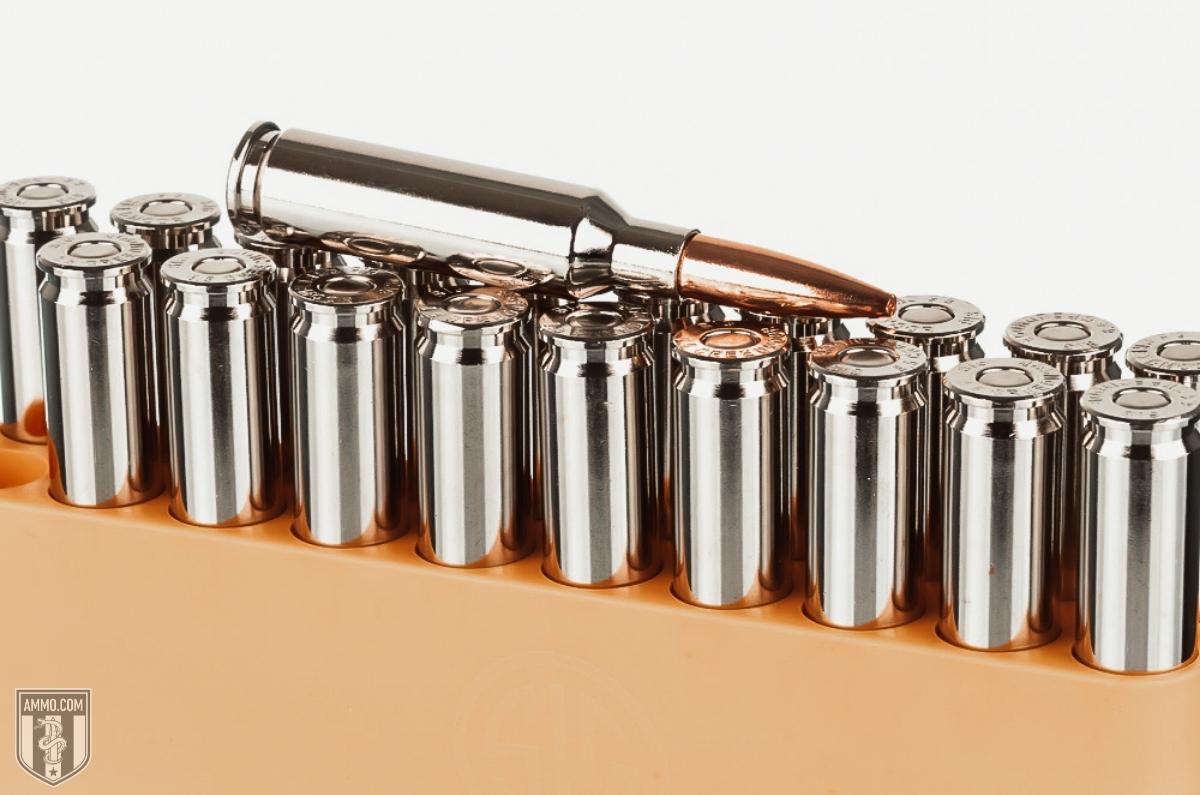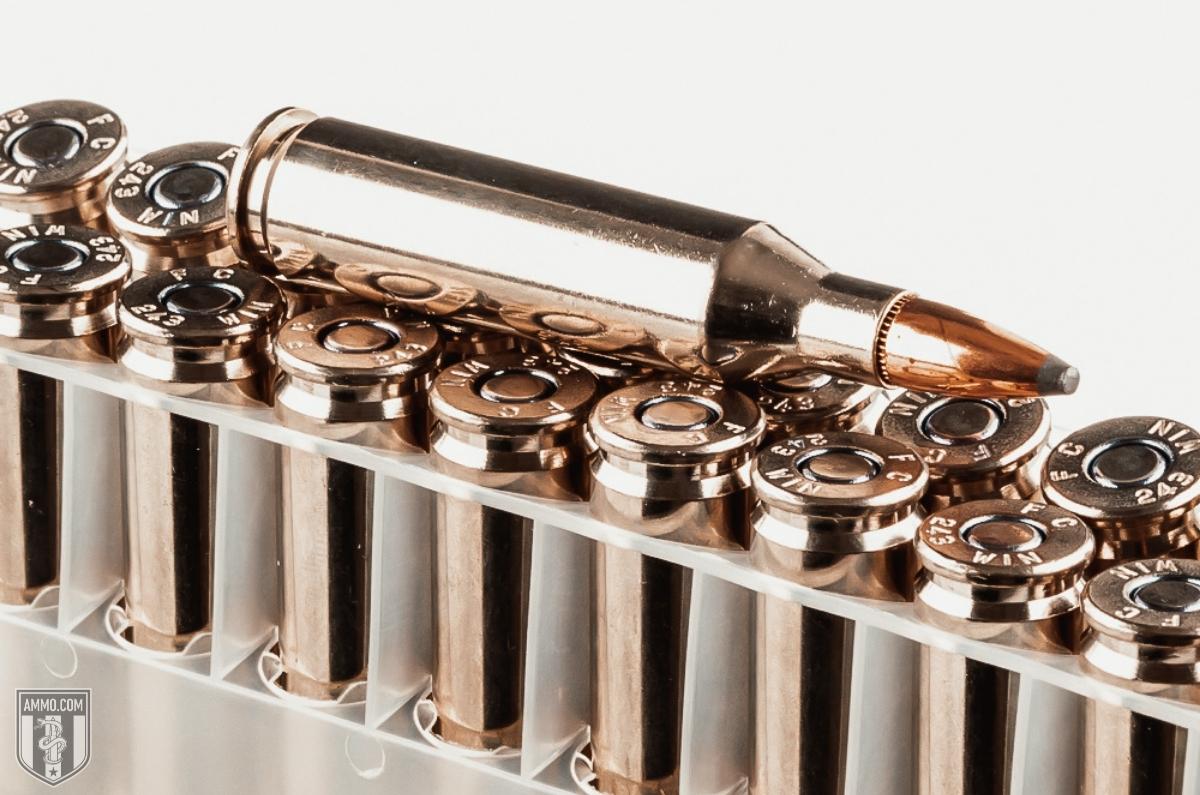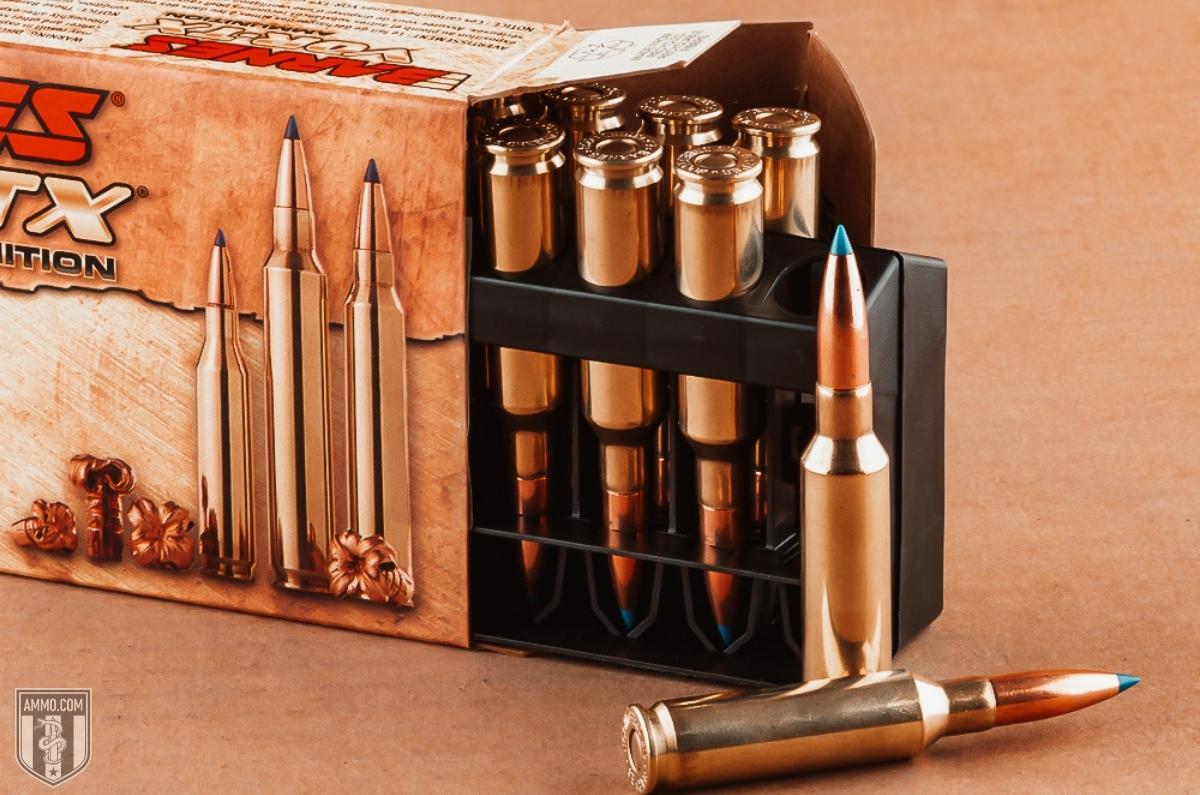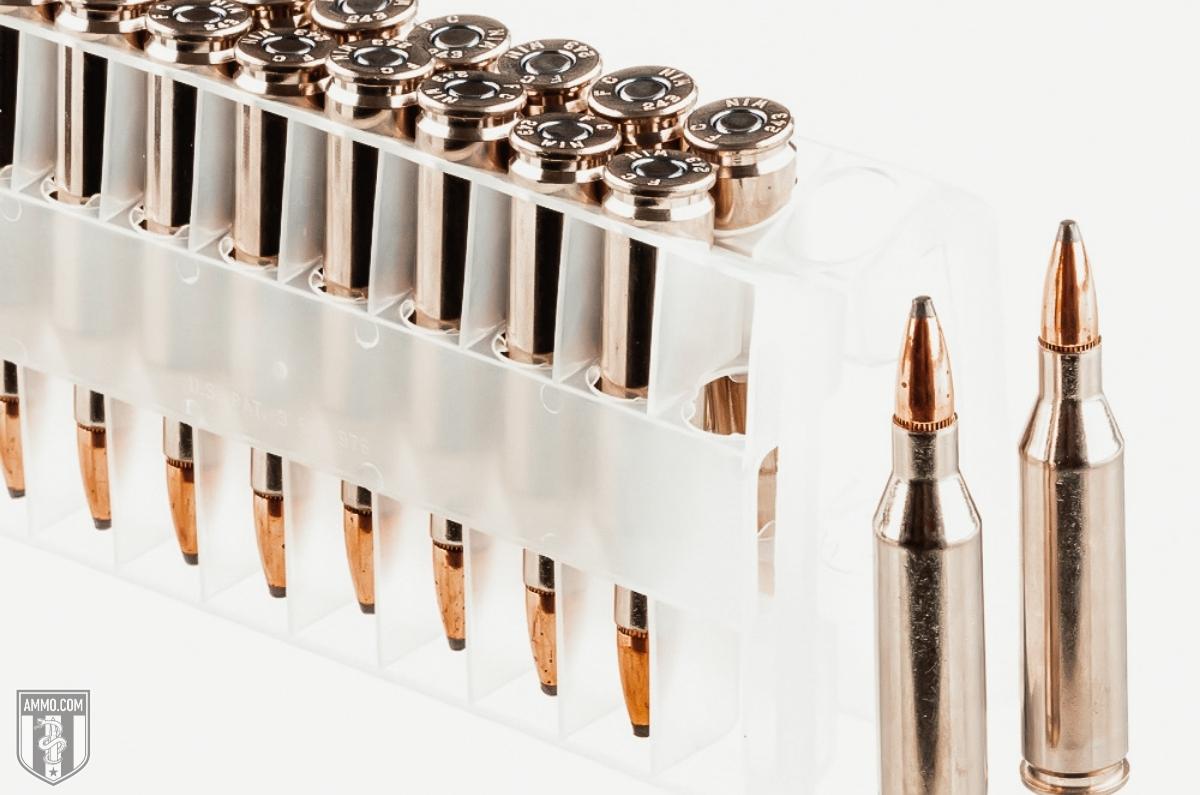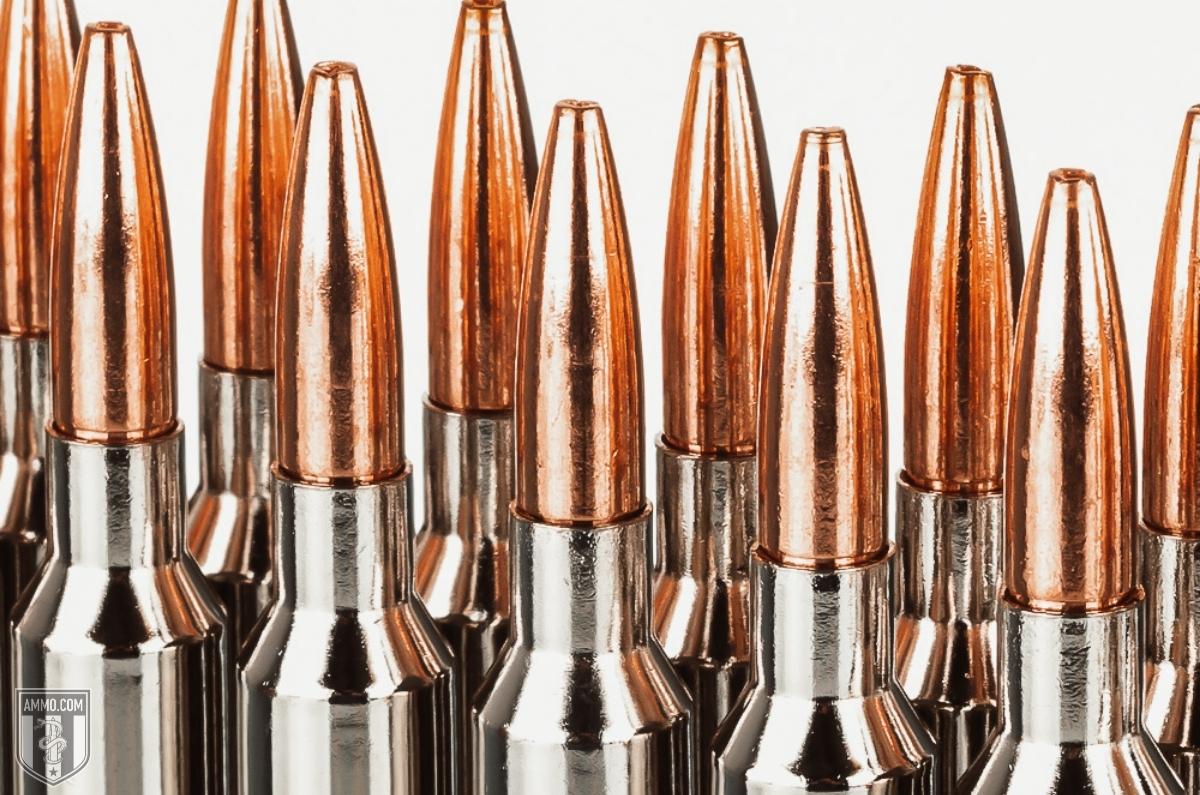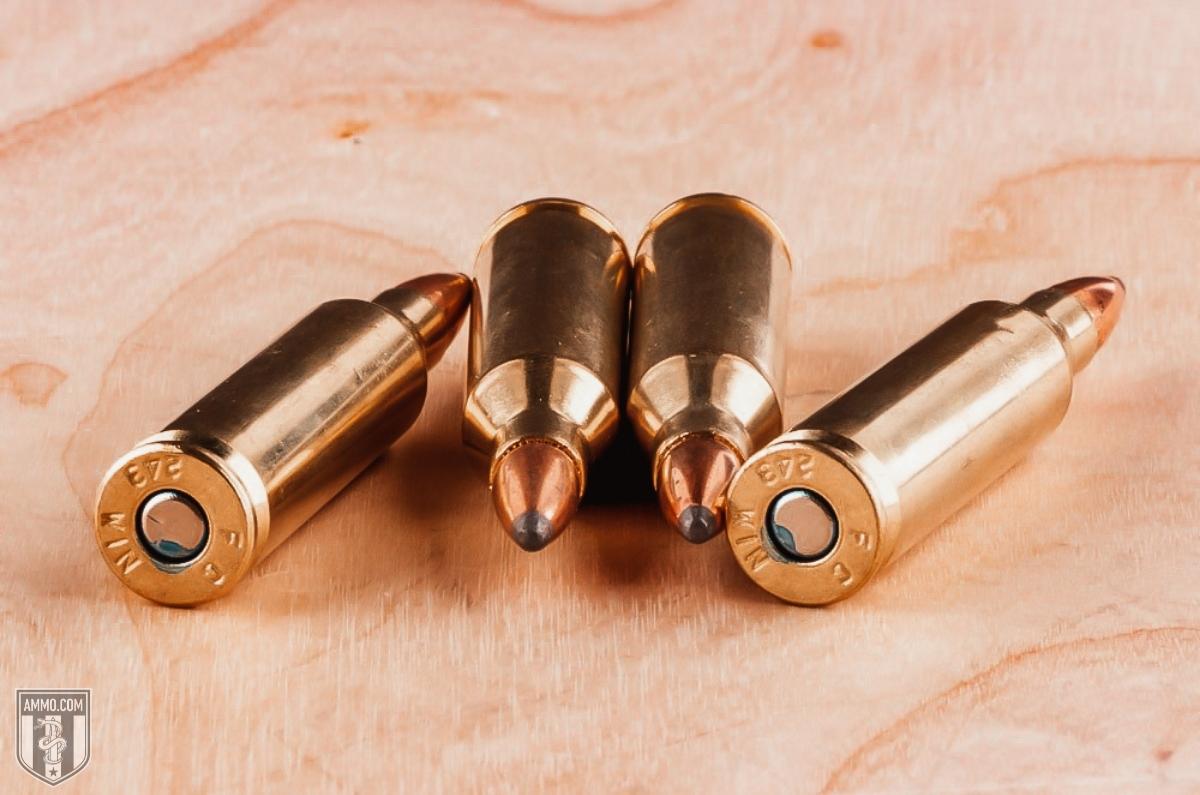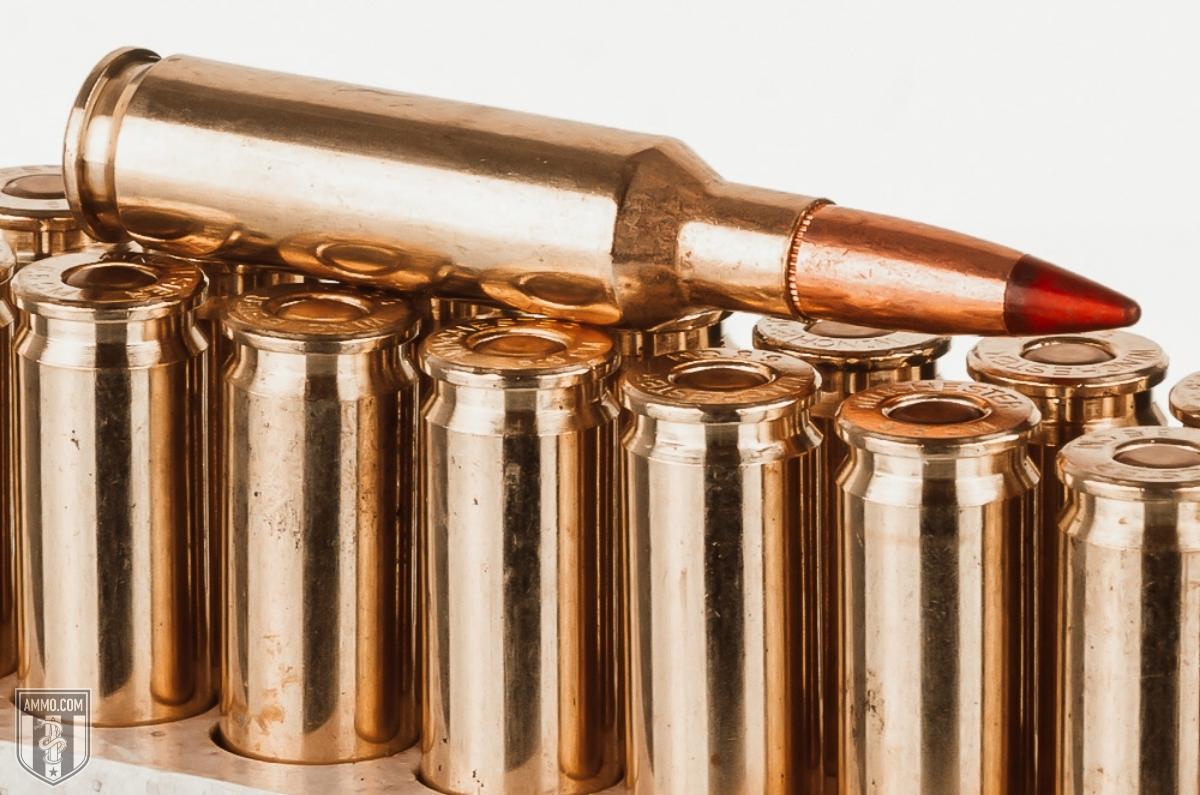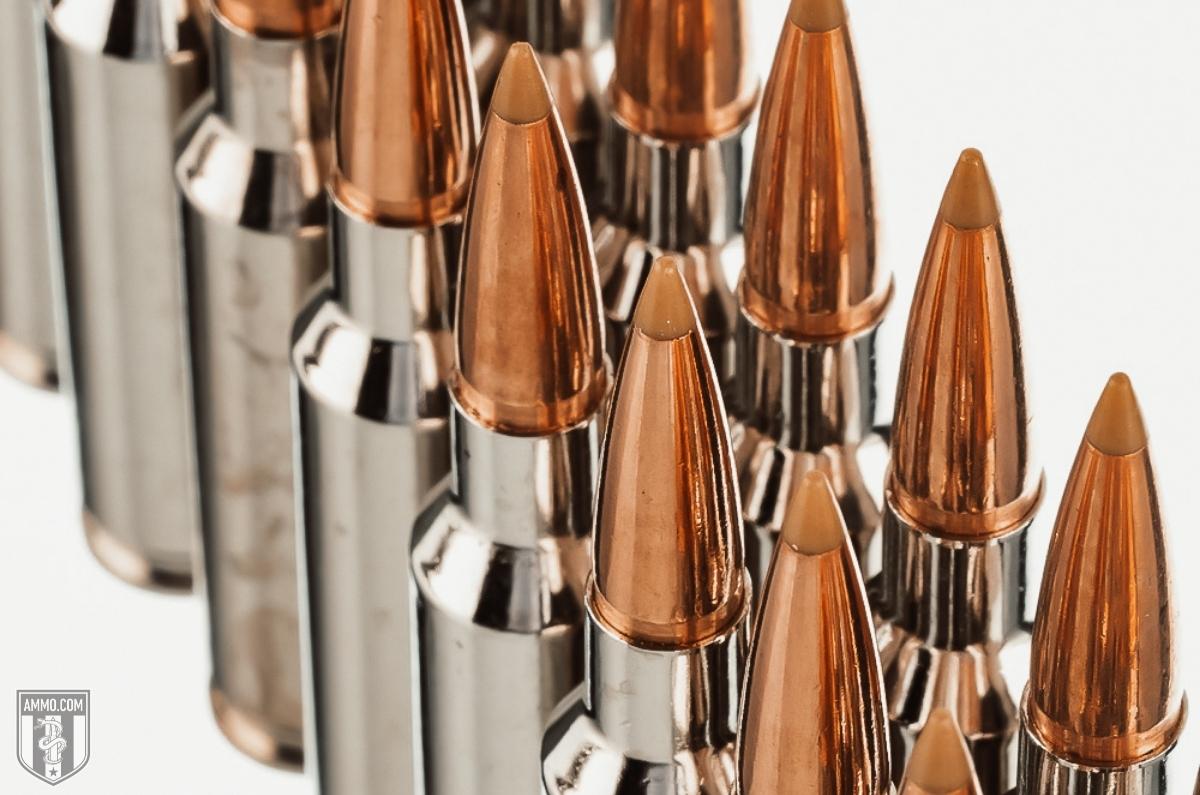243 vs 6.5 Creedmoor: Debating Deer Hunting Calibers

The old vs new. Though it feels as though the 6.5 Creedmoor has been on the market for many decades, it's still a relatively new caliber.
It's taken the shooting world by storm because of its unique capabilities for a wide variety of shooters.
The 243 Win, on the other hand, has been around for many decades. It's withstood the test of time, but how does it fare when the 243 vs 6.5 Creedmoor face-off?
Keep reading to find out!
243 vs 6.5 Creedmoor
The 243 Winchester has been a staple for new and seasoned deer hunters. It packs enough punch to harvest whitetail ethically, yet the recoil is minimal for those who are recoil adverse.
The 6.5 Creedmoor wasn't expected to do well when it was first released. However, to everyone's surprise, it quickly became a favorite of shooters and hunters.
These calibers might be easily confused if you only offer them a glance, but upon further inspection, you'll notice several differences worth noting.
Cartridge Specs
As long as you know the differences to look for, you won't have any trouble mixing these two rounds.
Let's begin with the bullet diameter of the 243 Winchester; if you know anything about guns, it's no surprise it's .243". The 6.5 Creedmoor bullet diameter is slightly larger at .264".
The case length of a 243 is 2.045", while the Creedmoor has a shorter case length of 1.92".
Some might mix these two rounds up because their overall length is close to the same, and rim diameter is the same. The 6.5 Creedmoor round is 2.825" long with a rim diameter of .473". The 243 Winchester is 2.71" long with a rim diameter of .473".

Although the difference in case length, the case capacity is nearly identical at 52.8 gr H2O for the 243 and 52.5 gr H2O for the 6.5 Creedmoor.
Lastly, the SAAMI maximum pressure for the 243 is 60,000 psi, while the max pressure for the 6.5 is 62,000 psi.
Let's move on to how the differences affect the felt recoil of each round.
243 vs 6.5 Creedmoor Recoil
I always try to compare the recoil of calibers because it's one of the first things everyone asks when shooting a new gun for the first time.
Felt recoil will vary from shooter to shooter and gun to gun.
So many factors go into recoil we could write an entire article over them; however, for this article, we're only going to concern ourselves with a few to make it as equal of a comparison as possible.
The 243 Winchester offers shooters a massive advantage with low felt recoil.
Shoulder fatigue and recoil anticipation are real problems regarding downrange accuracy, and shooters don't have to worry about either with a 243 because it only has 11 ft-lb of force.
The 6.5 Creedmoor packs a little bigger punch with 15 ft-lbs of force, which still isn't bad when you compare it to a 308 Winchester or 6.8 Western.
Will you be able to tell the difference when shooting them?
Maybe, but for the sake of argument, the 243 wins this round.
We will soon find out if the low felt recoil will help increase the average shooter's accuracy with this round, but first, let's talk about the trajectory of the bullets.
Trajectory
The trajectory is the bullet's path to the target. It is never flat, although we talk about "flat shooting guns" all the time.
The bullet's trajectory is an arch.
Sure, if you're shooting within 100 yds for most rifle calibers, the bullet won't experience much drop, but as you increase the distance, you'll see an increase in bullet drop because the bullet's speed begins to slow.
This means we must compensate for that when sighting in a gun.
The average 6.5 Creedmoor 143 grain bullet zeroed in at 200 yards has 7.9" of drop at 300 yds, 22.4" of drop at 400 yds, and 44.4" of drop at 500 yards.
The average 243 Winchester 90 gr bullet zeroed in at 200 yards has 6.1" of drop at 300 yds, 18.0" of drop at 400 yds, and 36.7" of drop at 500 yards. 500 yards is approaching the maximum Winchester 243 effective range.
The flatter trajectory is due in part to the higher muzzle velocity of the 243's lighter bullets.
The 243 Winchester also takes this category.
Accuracy: 6.5 vs 243
As with most scenarios concerning firearms and shooting, many factors determine the accuracy of the caliber.
The shooter, gun, barrel's twist rate, scope, and bullet all affect the caliber's accuracy.
For instance, my hunting rifle is a 270, which I'm accurate enough to harvest whitetail deer using factory ammo regularly. Still, my rifle is no longer accurate if I switch to a different weight bullet or a different brand of ammo.
To keep things simple, we're going to assume everything is as equal as possible and judge the calibers off of the two categories above because it's easier to be accurate with a caliber that has less recoil and shoots flatter.
The 243 Winchester is more accurate than the 6.5 Creedmoor in this instance. However, I have a feeling the 6.5 Creedmoor has some significant advantages in the coming sections.
Ballistic Coefficient
The ballistic coefficient (BC) is how aerodynamic a bullet is in numerical form. High BC bullets resist the wind more. Therefore, they're preferred, especially by long-distance shooters.
The ballistic coefficient varies based on bullet design, weight, and other factors beyond the scope of this article.
Generally, heavy bullets have a higher BC because it requires more force to change the flight of a heavier bullet than a lighter bullet.
A BC over .500 is considered high.
The 243 has a BC of .343 on average, while the AccuBond Long Range 142 gr and the Hornady ELD-X 143gr 6.5 Creedmoor bullet have a BC of .625.
This isn't much of a surprise since the Creedmoor fires a much heavier bullet while maintaining excellent aerodynamics.
The 6.5 Creedmoor is easily the winner of this section because of its resistance to wind drift.
Stopping Power: 243 vs 6.5
Stopping power is a delicate topic because some individuals believe in getting away with as little power as possible, and others adhere to the "go big or go home" mentality.
The "as little as possible" people rightly claim that a well-placed shot is just as practical no matter the caliber.
I agree, but what happens when you don't make a well-placed shot? This is bound to occur if you hunt long enough.
That's when the "go big or go home" people are correct.
I'm stuck in the middle, I prefer my shoulder to stay unbruised, but I want enough power to ethically kill a deer even with a less than perfect shot.
It's agreed that approximately 1000 ft-lb of kinetic energy is required to ethically harvest a deer.
Both of these calibers accomplish this at considerable ranges.
That's why I also look at the size of the hole the bullet leaves and bullet penetration.
It's evident that the bigger the hole, the better for hunting until you unnecessarily begin damaging meat.
It's also apparent the deeper the bullet penetrates, the better.
Bullet penetration is also known as sectional density (SD), a numerical representation of the bullet weight compared to its diameter.
Heavier projectiles with a larger bullet diameter have a higher sectional density.
Depending on the bullet type (FMJ, hollowpoint, or ballistic tip), the 243 sectional density will vary from 0.14 to 0.242.
The SD of a 140-grain, 6.5 Creedmoor projectile is 0.287.
The 6.5 mm Creedmoor is the winner of this category because it leaves a slightly bigger hole and better penetrates the target.
Hunting
Both of these calibers make an excellent case as a hunting cartridge, but I believe the 6.5 Creedmoor is the way to go.
That's because it will be more effective at farther distances.
Now, if you're like me and don't shoot at deer past 500 yards, then the 243 is the hunting round you'll likely want because of its low recoil and flat shooting capabilities out to 500yds.
This makes it suitable for varmint hunting, such as coyotes, and big game, such as deer and pronghorn.
However, if you prefer a long-range target, the 6.5 Creedmoor will be the caliber for you because it has more stopping power at greater distances than a 243 deer rifle.
The 6.5 Creedmoor wins this round because it is just as capable at shorter distances, and it can extend passed the range of the 243. Plus, it doesn't have that much more recoil.
Check out our top picks for the best 6.5 Creedmoor hunting ammo to maximize performance in the field.
Home Defense: .243 vs 6.5 Creedmoor
I wouldn't recommend either caliber for home defense because of two things. Overpenetration and these calibers are typically chambered in bolt-action rifles.
Overpenetration is when the bullet travels through the target and endangers your family and neighbors.
Bolt-action rifles are less than ideal for close quarters, so I recommend a 12ga or 20 ga shotgun over a rifle.
Another excellent option is a pistol chambered in 9mm or 45 ACP. These pistols can double as your concealed carry while you run errands in town.
This category is a tie because neither caliber is my first choice for self-defense.
With that said, if all you have is one of these calibers and the need arises, by all means, use it to protect yourself and your family.
Ammo Cost & Availability
Because the 243 Winchester has been around for decades, many manufacturers make 243 ammo.
Winchester, Federal, Hornady, Barnes, Remington, Nosler, and Browning all make at least one type of 243.
Winchester has the Winchester Ballistic SilverTip 95 Grain Polymer Tipped Ammunition for $2.50 per round as of this writing.
Winchester also offers the Winchester Deer Season XP Copper Impact 243 Win Ammo 85 Grain Copper Extreme Point Ammunition for $1.85 per round as of this writing.
With plenty of ammo companies making 243 Win ammunition, the availability is as good as any other caliber, and the cost is reasonable, considering the times.
Even though the 6.5 Creedmoor is newer than the 243, the ammo is still easily found and reasonably priced, with many of the same manufacturers making 6.4 Creedmoor ammo who make 243 ammo.
Hornady 6.5 Creedmoor 147 Grain ELD Match Ammunition costs $2.50 per round as of this writing.
Aguila 6.5 Creedmoor 140 Grain FMJBT only costs $1.75 per round at this time.
This section is tied because both calibers are relatively abundant and similarly priced.
Rifle Cost & Availability
Due to its initial popularity, many gun manufacturers began making a rifle chambered in 6.5 Creedmoor.
Savage Arms, Howa, Christensen Arms, Weatherby, Benelli, and Franchi all manufacture 6.5 mm bolt-action rifles.
An inexpensive new rifle will cost as little as $379, while the higher-end 6mm Creedmoor rifles will cost more than $2,000.
The 243 is a staple in short-action rifles. Mossberg, Henry, Winchester, Savage Arms, Ruger, and many others make firearms chambered in 243.
The prices are similar to the 6.5 Creedmoor, starting at $300 and going up to more than $2,000.
This category is also a tie because the rifles are readily available at near identical prices.
Reloading
Reloading is an excellent way to save money while target shooting compared to constantly buying factory loads. It also gives you more control over the controllable variables.
When handloading, you can tinker with the powder capacity of the case to get light recoil or longer ranges.
However, you should always follow the recommended amounts for the specific rifle cartridge you are reloading.
The 6.5 Creedmoor is popular amongst long-distance shooters, who are notorious reloaders because they need absolute consistency from every shot.
This means you'll have to compete with them to purchase all the supplies you need, but it also means most companies see it worthwhile to make everything you need to reload 6.5 Creedmoor.
The 243 Win has been popular amongst deer hunters for several decades, and deer hunters are another group who love must have consistency out of the round they're shooting, which is why many reload during the off-season.
So you'll have to compete with them for the supplies, but you'll also be reassured that companies see it as a profitable caliber.
There is a tremendous amount of information and reloading equipment/supplies for both calibers, so this section is another draw.
6.5 Creedmoor vs 243 Win Ballistics
The ballistics of each caliber are listed below in easy-to-read tables, so if you're a numbers person, feel free to appreciate the work of the team at ammo.com.
You'll find everything you need to know from muzzle velocity in feet per second (fps), muzzle energy in foot pounds, and trajectory for many different bullets.
243 Ballistics
Note: This information comes from the manufacturer and only for informational purposes. The actual ballistics obtained with your firearm can vary considerably from the advertised ballistics. Also, ballistics can vary from lot to lot with the same brand and type load.
| 243 Bullet WEIGHT | Muzzle VELOCITY (fps) | Muzzle ENERGY (ft. lbs.) | TRAJECTORY (in.) | |||||||||||
|---|---|---|---|---|---|---|---|---|---|---|---|---|---|---|
| Muzzle | 100 yds. | 200 yds. | 300 yds. | 400 yds. | Muzzle | 100 yds. | 200 yds. | 300 yds. | 400 yds. | 100 yds. | 200 yds. | 300 yds. | 400 yds. | |
| 55 Grain | 4025 | 3597 | 3209 | 2853 | 2525 | 1978 | 1579 | 1257 | 994 | 779 | 0.6 | 0 | -4 | -12.2 |
| 55 Grain WSSM | 4060 | 3628 | 3237 | 2880 | 2550 | 2013 | 1607 | 1280 | 1013 | 794 | 0.6 | 0 | -3.9 | -12 |
| 58 Grain | 3925 | 3465 | 3052 | 2676 | 2330 | 1984 | 1546 | 1200 | 922 | 699 | 0.7 | 0 | -4.4 | -13.8 |
| 60 Grain | 3600 | 3110 | 2660 | 2260 | 1890 | 1725 | 1285 | 945 | 680 | 475 | 2 | 1.8 | -3.3 | -15.5 |
| 70 Grain | 3400 | 3020 | 2672 | 2350 | 2050 | 1797 | 1418 | 1110 | 858 | 653 | 0 | -2.5 | -9.7 | n/a |
| 70 Grain | 3400 | 3040 | 2700 | 2390 | 2100 | 1795 | 1435 | 1135 | 890 | 685 | 1.1 | 0 | -5.9 | -18 |
| 75 Grain | 3350 | 2955 | 2593 | 2259 | 1951 | 1993 | 1551 | 1194 | 906 | 676 | 2 | 0.9 | -5 | -19 |
| 80 Grain | 3350 | 2955 | 2593 | 2259 | 1951 | 1993 | 1551 | 1194 | 906 | 676 | 2 | 0.9 | -5 | -19 |
| 80 Grain | 3425 | 3081 | 2763 | 2468 | 2190 | 2984 | 1686 | 1357 | 1082 | 852 | 1.1 | 0 | -5.7 | -17.1 |
| 80 Grain Superformance | 3425 | 3080 | 2760 | 2463 | 2184 | 2083 | 1684 | 1353 | 1077 | 847 | 1.1 | 0 | -5.7 | -17.1 |
| 85 Grain | 3320 | 3070 | 2830 | 2600 | 2380 | 2080 | 1770 | 1510 | 1280 | 1070 | 2 | 1.2 | -4 | -14 |
| 87 Grain | 2800 | 2574 | 2359 | 2155 | 1961 | 1514 | 1280 | 1075 | 897 | 743 | 1.9 | 0 | -8.1 | -23.8 |
| 90 Grain | 3120 | 2871 | 2635 | 2411 | 2199 | 1946 | 1647 | 1388 | 1162 | 966 | 1.4 | 0 | -6.4 | -18.8 |
| 95 Grain | 3185 | 2908 | 2649 | 2404 | 2172 | 2140 | 1784 | 1480 | 1219 | 995 | 1.3 | 0 | -6.3 | -18.6 |
| 95 Grain WSSM | 3250 | 3000 | 2763 | 2538 | 2325 | 2258 | 1898 | 1610 | 1359 | 1140 | 1.2 | 0 | -5.7 | -16.9 |
| 100 Grain | 2960 | 2697 | 2449 | 2215 | 1993 | 1945 | 1615 | 1332 | 1089 | 882 | 2.5 | 1.2 | -6 | -20 |
| 100 Grain Light Magnum | 3100 | 2839 | 2592 | 2358 | 2138 | 2133 | 1790 | 1491 | 1235 | 1014 | 1.5 | 0 | -6.8 | -19.8 |
| 100 Grain WSSM | 3110 | 2838 | 2583 | 2341 | 2112 | 2147 | 1789 | 1481 | 1217 | 991 | 1.4 | 0 | -6.6 | -19.7 |
| 105 Grain | 2920 | 2689 | 2470 | 2261 | 2062 | 1988 | 1686 | 1422 | 1192 | 992 | 2.5 | 1.6 | -5 | -18.4 |
6.5 Creedmoor Ballistics
Note: This information comes from the manufacturer and only for informational purposes. The actual ballistics obtained with your firearm can vary considerably from the advertised ballistics. Also, ballistics can vary from lot to lot with the same brand and type load.
| 6.5mm Creedmoor Bullet WEIGHT | Muzzle VELOCITY (fps) | Muzzle ENERGY (ft. lbs.) | TRAJECTORY (in.) | |||||||||||
|---|---|---|---|---|---|---|---|---|---|---|---|---|---|---|
| Muzzle | 100 yds. | 200 yds. | 300 yds. | 400 yds. | Muzzle | 100 yds. | 200 yds. | 300 yds. | 400 yds. | 100 yds. | 200 yds. | 300 yds. | 400 yds. | |
| 120 Grain | 3020 | 2815 | 2619 | 2430 | 2251 | 2430 | 2111 | 1827 | 1574 | 1350 | 1.4 | 0 | -6.5 | -18.9 |
| 120 Grain | 3050 | 2850 | 2659 | 2476 | 2300 | 2479 | 2164 | 1884 | 1634 | 1310 | 1.4 | 0 | -6.3 | -18.3 |
| 129 Grain Superformance | 2950 | 2756 | 2570 | 2392 | 2221 | 2492 | 2175 | 1892 | 1639 | 1417 | 1.5 | 0 | -6.8 | -19.7 |
| 140 Grain | 2550 | 2380 | 2217 | 2060 | 1910 | 2021 | 1761 | 1527 | 1319 | 1134 | 2.3 | 0 | -9.4 | -27 |
| 140 Grain | 2710 | 2557 | 2410 | 2267 | 2129 | 2283 | 2033 | 1805 | 1598 | 1410 | 1.9 | 0 | -7.9 | -22.6 |
| 140 Grain | 2820 | 2654 | 2494 | 2339 | 2190 | 2472 | 2179 | 1915 | 1679 | 1467 | 1.7 | 0 | -7.2 | -20.6 |
History of the 243
In 1955, Winchester introduced the .243, which became very popular amongst varmint and deer hunters.
It didn't take long for the 243 to gain praise in the press, which led to near immediate success. Despite having competitors like the 244 Rem, it thrived and continues to thrive today.
The parent case for the .243 Win is the 308 cartridge necked down to accept .243" diameter bullets.
History of the 6.5 Creedmoor
In 2005 Dennis Demille was approached by several competition shooters complaining about the unreliability of their guns and 6mm wildcat ammo they were shooting.
In turn, Dennis talked with his friend Dave Emary, Hornady Manufacturing's senior ballistician who led the development of the 6.5 Creedmoor, which Hornady debuted in 2007.
At first, many people were concerned that the bullet was too small for hunting and not adequate for long-range shooting. Well, they were wrong, and the Creedmoor has become increasingly popular as the years pass.
Parting Shots
Now that we've compared the 243 vs 6.5 Creedmoor side-by-side, it's easy to see why both calibers are beloved by many.
However, were not big believers in everyone getting a trophy just for showing up, so we're going to end by counting the total and announcing the overall winner.
The 243 Winchester won 3/10 categories but so did the 6.5 Creedmoor, and they tied in 4/10 sections.
The winner is the 243 Winchester if you're sensitive to recoil, don't shoot past 500yds, and primarily hunt varmints or deer-sized game.
The 6.5 Creedmoor is the winner if you're a long-range shooter and need more knock-down power.
Ammo Comparisons
- .308 vs 5.56
- 6.5 Creedmoor vs .308
- .300 Blackout vs .308
- .300 Win Mag vs .308
- .243 vs .308
- .308 vs .30-06
- 7mm-08 vs .308
- .270 vs .308
- 7.62x39 vs .308
- .223 vs .308
- .338 Lapua vs .308
- .380 ACP vs 9mm
- .223 vs 5.56
- .300 Blackout vs 5.56
- 9mm vs 45 ACP
- 9mm vs 40 S&W
- .357 SIG vs 9mm
- 10mm vs 9mm
- 9mm vs 9mm Luger
- .243 vs .270
- .300 Win Mag vs .30-06
- .270 vs .30-06
- .40 vs .45
- 38 Special vs 357
- 9mm vs 40 vs 45
- 5.56 vs 7.62x39
- 338 Lapua vs .30-06
- .30-30 vs .30-06
- 300 PRC vs 338 Lapua
- .30-06 vs 7mm
- 300 Win Mag vs 338 Lapua
- 300 PRC vs 300 Win Mag
- 300 WSM vs 300 Win Mag
- 338 Win Mag vs 338 Lapua
- 12 Gauge vs 20 Gauge
- 10mm vs 357 Mag
- .30-30 vs 7.62x39
- 224 Valkyrie vs 22-250
- 17 HMR vs 22 Mag
- 7.62x39 vs .300 Blackout
- 45 ACP vs 45 Auto
- 45-70 vs 30-30
- 300 Blackout vs 223
- 357 Magnum vs 9mm
- 350 Legend vs 300 Blackout
- 224 Valkyrie vs 223
- 45 ACP vs 38 Super
- 6.5 Grendel vs .308
- 17 HMR vs 22 LR
- 10 Gauge vs 12 Gauge
- 22-250 vs 223
- 45 Colt vs 45 ACP
- 350 Legend vs 30-30
- 5.7x28 vs 223
- 5.7 vs 9mm
- 5.56 vs 5.7
- 22 vs 9mm
- Buckshot vs Birdshot
- 450 Bushmaster vs 308
- 450 Bushmaster vs 223
- Buckshot vs Slug
- 6.5 Grendel vs 5.56 vs 223
- 6mm ARC vs 6.5 Grendel
- 44 vs 45
- 458 SOCOM vs 5.56
- 357 vs 44
- 32 ACP vs 380
- 300 Win Mag vs 338 Win Mag vs 338 Lapua Mag
- 450 Bushmaster vs 458 SOCOM vs 50 Beowulf
- 6mm Creedmoor vs 6.5 Creedmoor
- TMJ vs FMJ
- 44 Special Vs 44 Magnum
- 45 90 vs 45 70
- 6.8 Western vs 6.8 SPC
- 50 Beowulf vs 50 BMG
- 26 Nosler vs 6.5 PRC
- 28 Gauge vs 410
- 6.8 SPC vs 5.56
- 6.8 SPC vs 6.5 Grendel
- 6.8 Western vs 7mm Rem Mag vs .28 Nosler
- 6.8 Western vs 6.5 Creedmoor
- 22 Hornet vs 223
- 6.8 Western vs 6.5 PRC
- .410 vs 12 Gauge
- .410 vs 20 Gauge
- 22 LR vs 22 Mag
- 6mm ARC vs 243
- 7mm-08 vs 270
- 243 vs 6.5 Creedmoor
- Nickel vs Brass Casing
- 204 Ruger vs 223
- 50 Beowulf vs 5.56
- 260 Remington vs 6.5 Creedmoor
- 6mm Remington vs 243
- 28 Nosler vs 300 PRC
- 50 Beowulf vs 50 AE
- 22 Nosler vs 22-250
- 450 Marlin vs 45-70
- 300 Win Mag vs 300 Norma
- 458 SOCOM vs 300 Blackout
- 38-55 vs 45-70
- 22 Hornet vs 22 LR
- 300 Norma vs 338 Lapua
- 338 Lapua vs 50 BMG
- 28 Nosler vs 300 Win Mag
- 28 Nosler vs 6.5 Creedmoor
- 204 vs 22-250
- 458 SOCOM vs 45 70
- 44 40 vs 45 70
- 6.8 SPC vs 6.5 Creedmoor
- 450 Bushmaster vs 30-06
- 7mm Rem Mag vs 300 Win Mag
- 30 Carbine vs 223
- 25-06 vs 30-06
- 26 Nosler vs 28 Nosler
- 16ga vs 12ga
- 30 06 vs 7.62 x54R
- 9mm Makarov vs 9mm Luger
- 350 Legend vs 223
- 30 Carbine vs 5.56
- 6.5x55 vs 6.5 Creedmoor
- 6.5 Creedmoor vs 270 vs 25-06
- M193 vs M855
- 450 Bushmaster vs 458 SOCOM
- 6.5 Grendel vs 6.5 Creedmoor
- 350 Legend vs 5.56
- .277 Fury vs 6.8 SPC
- 277 Fury vs 300 Win Mag
- 10mm vs .45 ACP
- 277 Fury vs 223
- 6.8 SPC vs 300 Blackout
- 6.5 PRC vs 6.5 Creedmoor
- 277 Fury vs 308
- 277 Fury vs 6.5 Creedmoor
- 350 Legend vs 450 Bushmaster
- 277 Fury Vs 5.56 NATO
- 10mm vs 40S&W
- 32 ACP vs 9mm
- 32 Special vs 9mm
- 8.6 Blackout vs 300 Blackout
- 30 Super Carry vs. 9mm
- 5.56 vs 9mm
- .50 Action Express vs 9mm
- 7.62x25 vs. 9mm
- 10mm vs 44 Magnum
- 300 Blackout vs 300 Win Mag
- 6.5 Grendel vs 300 Blackout
- 460 Rowland vs 10mm
- 300 RUM vs 300 PRC
- 300 Norma vs 300 PRC
- 45 GAP vs 45 ACP
- 7mm PRC vs 300 Win Mag
- 300 PRC vs 6.5 Creedmoor
- 300 PRC vs 308
- 357 SIG vs 357 Mag
- 7.62x39 vs 7.62x51
- 243 Win vs 223 Rem
- 30 Nosler vs 300 PRC
- 6.5 Creedmoor vs. 30-06 Springfield
- 450 S&W vs. 44 Magnum
- 6.5 Creedmoor vs. 300 Win Mag
- 454 Cassull vs. 45-70 Govt
- 454 Cassull vs. 44 Mag
- 7.62x54r vs. 308 Winchester
- 22 ARC vs. 223 Rem
- Subsonic vs. Supersonic Ammo
